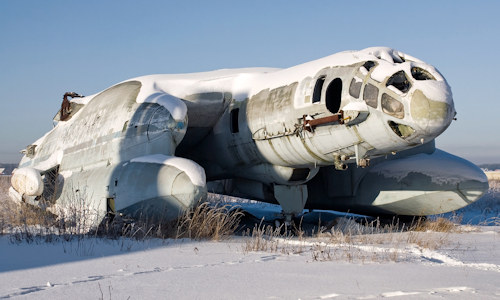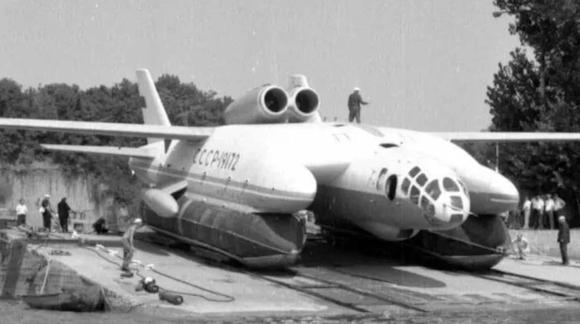By reconnecting to the previous article of 6 November, in the 60s in the Soviet Union, ecranoplanes were not only a subject of study by the Central Hydrofoil Design Bureau with Alexeyev, but also the engineer Bartini, an Italian naturalized Soviet, on behalf of the Beriev Design Bureau was already developing 1956, the small Beriev ecranoplane Be-1 propelled by a Tumansky turbojet RU-19 which would serve as a prototype for the development of the Wing-In-Ground effect.
In the early 70s, the American submarine class George Washington e Ethan Allen along with the British class Resolution armed with missiles Polaris constituted a serious threat to the USSR and Bartini led the Bartini Beriev to development VVA-14 (Vertikal'no-Vzletayushchaya amfibiya) able to take off from the water, thanks to the ground effect, to fly at 350 knots up to 1320 miles away.
The engineer Bartini decided to develop the project in three phases with the same number of prototypes gradually more and more equipped. The VVA-14M1, used as a test bench for both technology and aerodynamics and equipped with rigid floats, flew for the first time on 4 September 1972 from a conventional runway powered by two Soloviev turbofans D-30M.
This first prototype would be followed by the VVA-14M2 equipped with ascension engines to raise the aircraft off the ground before starting the Rybinsk 12 thrusters RD-36-35PR that would give it VTOL capabilities and control systems fly-by-wire. Finally, the final version VVA-14M3 which could be armed and equipped with the antisom system burevestnik and the MAD Bor-1.
 In 1974 inflatable floats were installed on the M1 prototype which caused considerable problems in the floating and buoyancy phases to the point that the rigid version had to be used again, starting amphibious tests only on 11 June 1975. These delays, together with the death of Bartini , which took place on December 6, 1974, and the failure to deliver the Rybinsk engines, led to a strong expansion of the project which ended in 1987 with 107 test flights and 103 hours. The only remaining specimen, No. 19172, was delivered to the Central Museum of the Soviet Air Force in Monino where it is currently present partially dismantled.
In 1974 inflatable floats were installed on the M1 prototype which caused considerable problems in the floating and buoyancy phases to the point that the rigid version had to be used again, starting amphibious tests only on 11 June 1975. These delays, together with the death of Bartini , which took place on December 6, 1974, and the failure to deliver the Rybinsk engines, led to a strong expansion of the project which ended in 1987 with 107 test flights and 103 hours. The only remaining specimen, No. 19172, was delivered to the Central Museum of the Soviet Air Force in Monino where it is currently present partially dismantled.
The VVA-14 was the swan song of one of the greatest Soviet aeronautical designers, among its projects it is necessary to remember the Stal'-7 who set the closed circuit world record on 5000km, completing them in 12 hours and 31 minutes in August 1939. Arrested during the Stalinist purges, his Stal'-7 reworked by Ermolaev became the long-range bomber He-2 proponent of raids on Berlin and other Reich territories, moreover, during his imprisonment he collaborated with Tupolev for the development of the famous Tu-2. During the war he developed it RD-114, although it remained only on paper due to development problems with the rocket propeller, a point interceptor with a very similar design to the Messerschmidt Me-163. After the Great Patriotic War he came out of captivity and devoted himself to the development of a double delta wing solution, used a few decades later on the Tupolev Tu-144, and subsequently to projects of transport and large aircraft, collaborating with Antonov for the constructive scheme of the full load of those who will be An-8 e An-10 later exploited also by Ilyushin.
Photo: web / Alex Beltyukov












